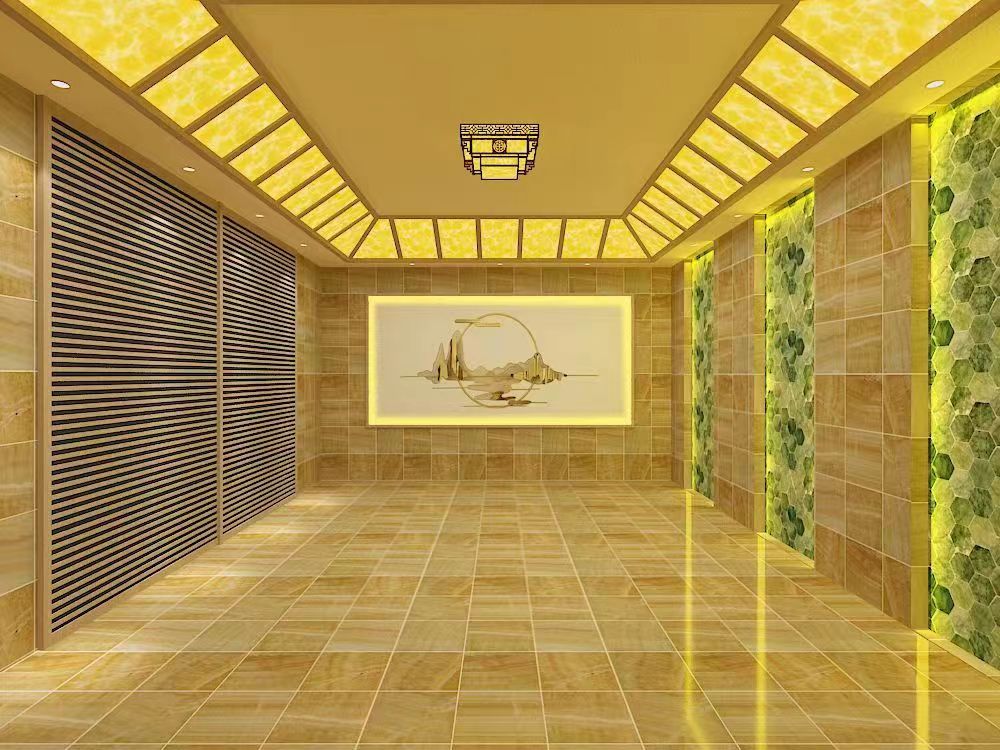
In the pursuit of creating a desirable sweat room environment in the North, where climatic conditions can present unique challenges, the selection of appropriate wall materials that strike a balance between moisture resistance and breathability is of utmost importance. This balance is crucial for maintaining a healthy and long-lasting space that meets the specific needs of a sweat room.
The northern regions are often characterized by cold and sometimes humid climates. In a sweat room, where high levels of moisture are generated during use, effective moisture resistance is essential. Moisture can lead to a variety of issues if not properly managed. It can cause the growth of mold and mildew, which not only pose health risks but can also damage the structural integrity of the walls over time. Mold spores can cause respiratory problems and allergies, making it imperative to choose materials that can prevent moisture from penetrating and accumulating within the wall structure. Additionally, excessive moisture can lead to peeling paint, warping of wooden panels, and corrosion of metal components, shortening the lifespan of the sweat room and necessitating costly repairs.
While moisture resistance is crucial, breathability is equally important. A sweat room needs to be able to "breathe" to allow for the proper exchange of air and moisture. If the walls are too impermeable, the trapped moisture can create a stale and uncomfortable environment. Good breathability helps to regulate humidity levels within the room, preventing the buildup of excessive moisture and maintaining a more comfortable atmosphere for users. It also allows any residual moisture from the sweating process to evaporate more easily, reducing the likelihood of mold growth and improving the overall air quality. This is particularly beneficial in the North, where the colder temperatures outside can sometimes cause a difference in pressure, making it even more important for the sweat room to have proper ventilation and breathability in its wall materials.
Ceramic tiles are a popular choice for sweat rooms due to their excellent moisture resistance. They are impervious to water, making them highly effective at preventing moisture penetration. Their smooth surface is also easy to clean and maintain, which is beneficial in a sweaty environment where hygiene is crucial. However, ceramic tiles can have relatively low breathability. While they can resist moisture well, they may not allow for the same level of air and moisture exchange as some other materials. This could potentially lead to a more stagnant air environment inside the sweat room if proper ventilation is not in place.
Some natural stones like granite and marble can offer good moisture resistance. They are durable and can withstand the humid conditions of a sweat room. However, like ceramic tiles, their breathability may be limited. Moreover, natural stone can be expensive and may require more careful installation and maintenance. It is also important to note that some types of natural stone may be porous to a certain extent, which could affect their moisture resistance properties if not properly sealed.
PVC panels are known for their moisture resistance as they are waterproof and resistant to mold and mildew. They are relatively lightweight and easy to install, which can be an advantage in construction or renovation projects. In terms of breathability, PVC panels are not as breathable as some natural materials. However, they can be a good option if combined with proper ventilation systems to ensure adequate air exchange in the sweat room.
Wooden panels can add a warm and aesthetically pleasing look to a sweat room. Certain types of wood, such as cedar, are naturally resistant to moisture to some degree. However, wood in general requires proper treatment and sealing to enhance its moisture resistance. If not properly maintained, wood can warp or rot due to the high moisture levels in a sweat room. In terms of breathability, wood has moderate breathability, which can help in regulating humidity to a certain extent. But it is crucial to ensure that the wood is well-protected to prevent moisture-related damage.
There are also specialized wall coatings available in the market that are designed to provide both moisture resistance and breathability. These coatings often contain advanced polymer formulations that create a barrier against moisture while still allowing the passage of air. They can be applied over various substrates such as concrete or drywall, providing an additional layer of protection and functionality. Some of these coatings also have anti-microbial properties, further enhancing the healthiness of the sweat room environment.
To create a healthy, long-lasting sweat room environment in the North, it is advisable to consider a combination of factors. One approach could be to use a moisture-resistant base material such as ceramic tiles or PVC panels for the lower parts of the walls that are more likely to come into direct contact with moisture. For the upper parts of the walls, where breathability becomes more crucial for overall air quality, materials like wood panels or specialized breathable coatings could be used. Additionally, ensuring proper ventilation in the sweat room through the installation of exhaust fans or air vents is essential to complement the properties of the wall materials. Regular maintenance and inspection of the walls are also necessary to detect any signs of moisture damage or mold growth early on and take appropriate measures.

